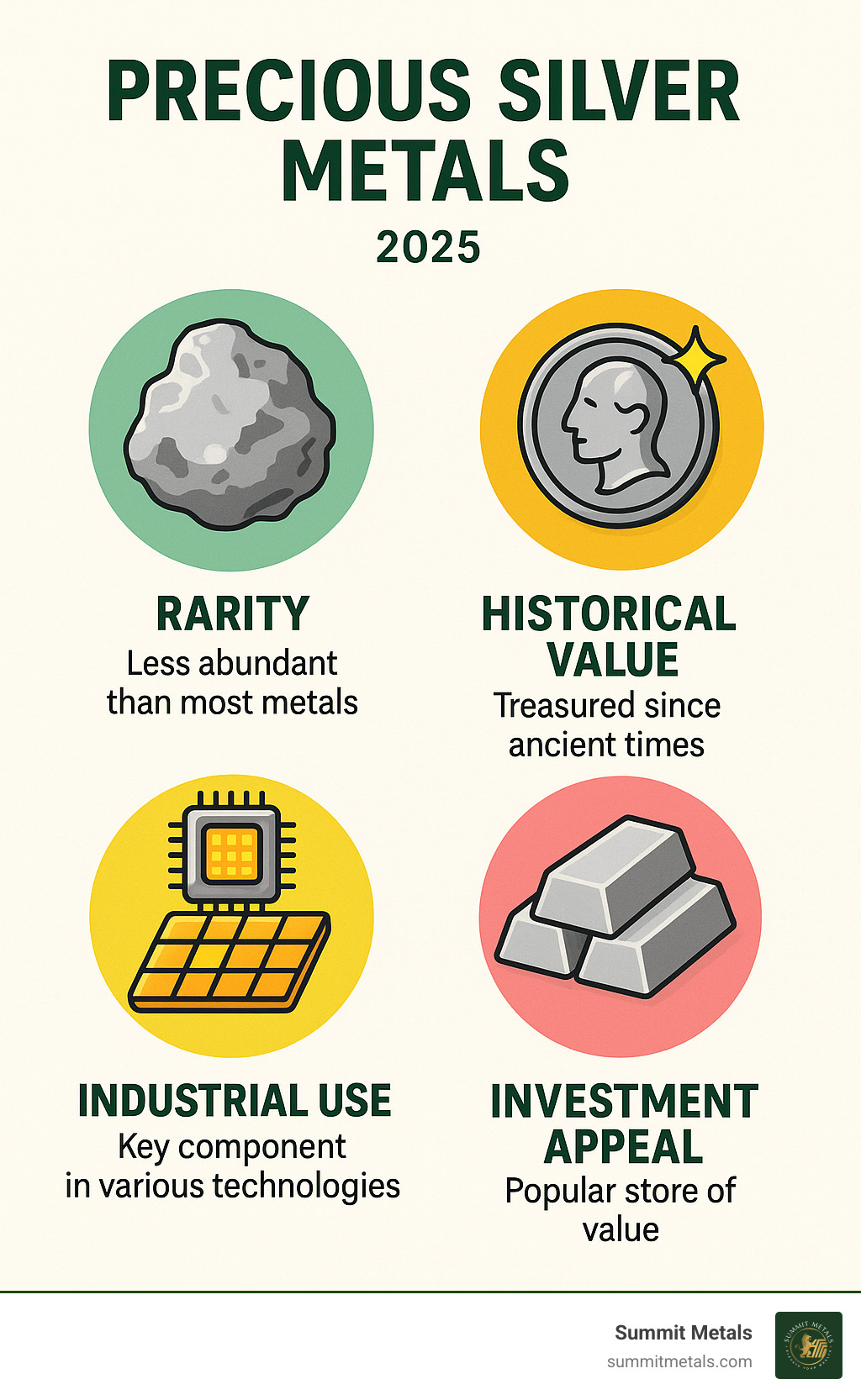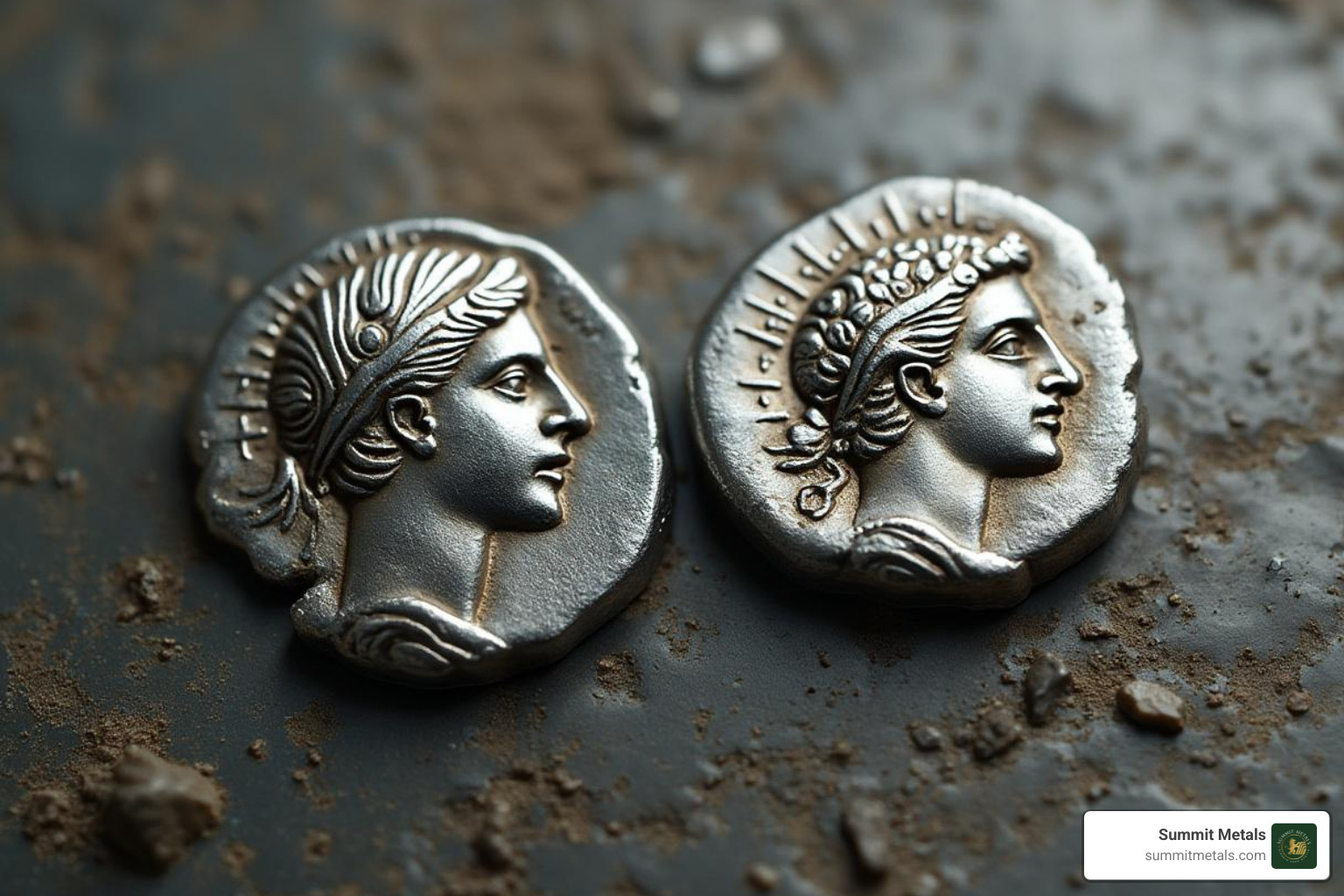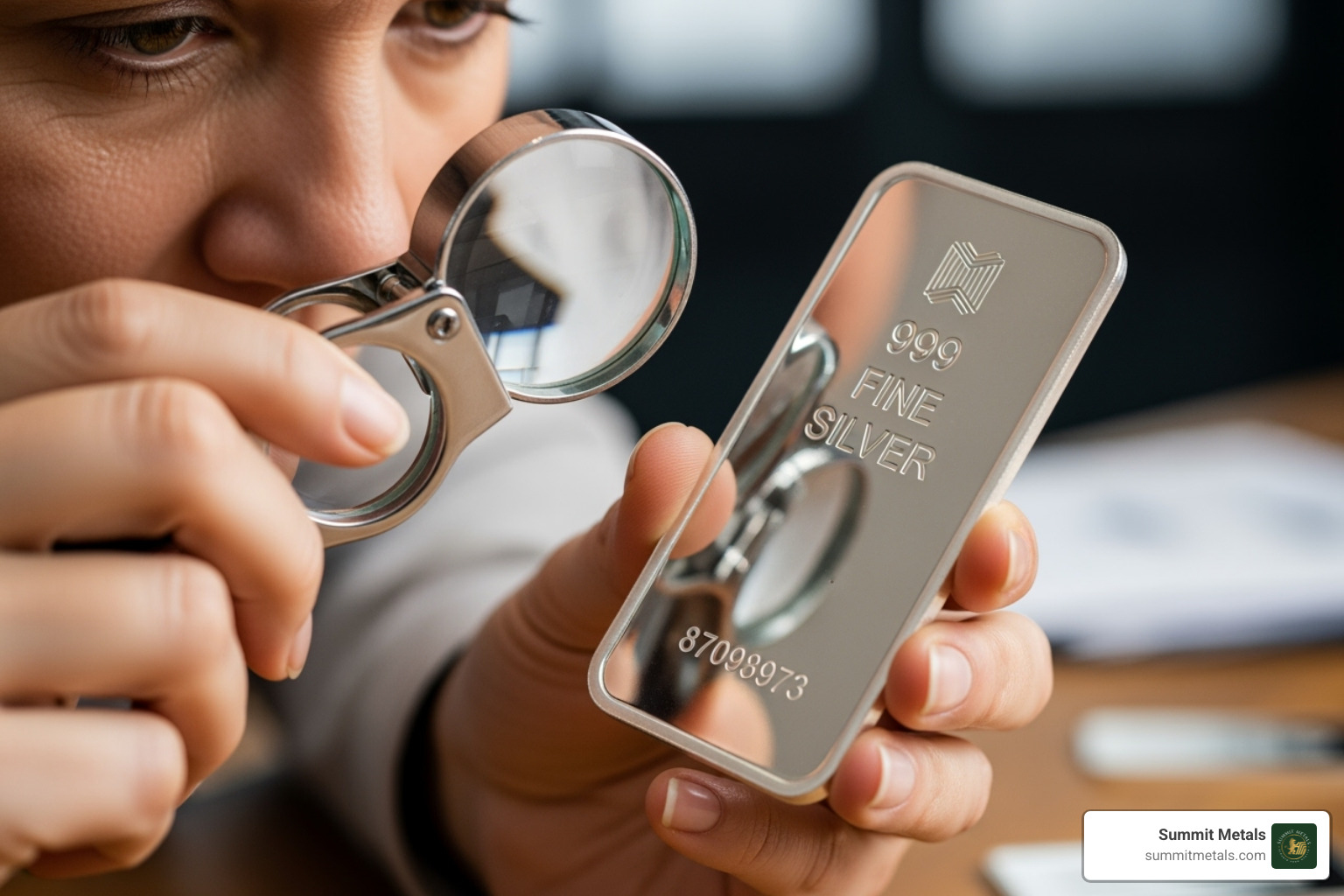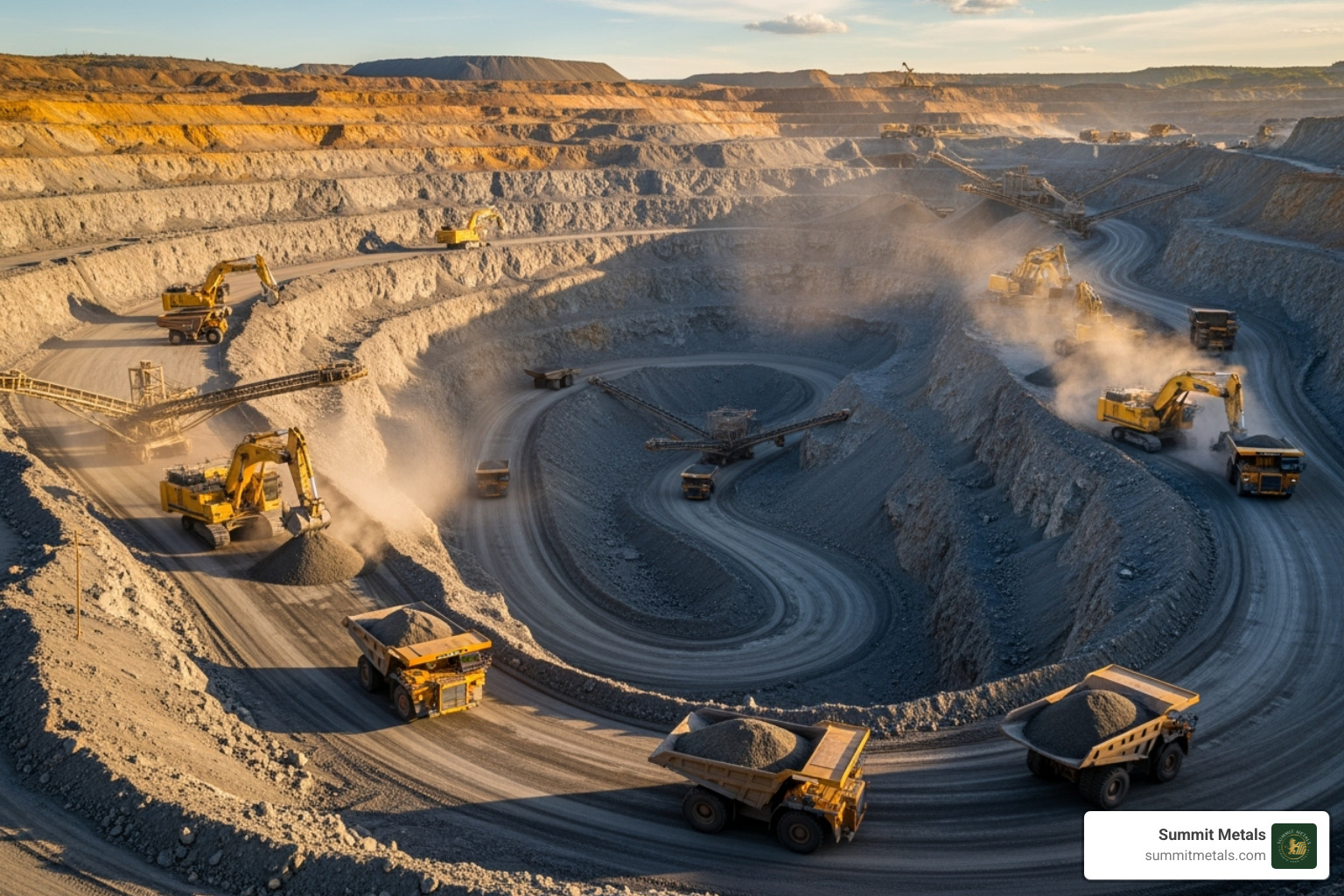Understanding Precious Silver Metals
Precious silver metals are defined by a unique set of qualities that have made them valuable for millennia. Their worth extends far beyond their brilliant shine. For additional scientific details on silver’s chemical and physical characteristics, see the Silver article on Wikipedia.
Here's what makes silver a precious metal:
- Rarity: Found in low concentrations in the Earth's crust (75 ppb), silver is a scarce resource.
- Historical Importance: Valued for 6,000 years, silver was first used as currency in 700 B.C.
- Intrinsic Value: As a tangible asset that cannot be easily created, silver holds inherent value.
- Unique Properties: It boasts the highest electrical and thermal conductivity of all metals and is the most reflective.
- Industrial Use: Modern industries rely on silver for electronics, solar panels, and medical equipment.
- Investment Potential: Many invest in silver to protect their wealth and diversify their portfolios.
This guide explores what makes silver precious, from its long history and vital role in modern industry to its use as a smart investment and its sourcing from around the globe.

The Enduring Lure of Silver: History and Significance

For 6,000 years, precious silver metals have held a special place in human history. As a rare element found in just 75 parts per billion in the Earth's crust, its scarcity and beauty have made it a symbol of wealth and power for millennia.
The first silver mines date back 5,000 years to modern-day Turkey. Silver quickly evolved from ornamentation to a store of value. Around 700 B.C., it became a form of currency, a pivotal moment that simplified trade and spurred economic growth. The ancient Greek drachma, Roman denarius, and British pound sterling all originated as specific weights of silver, cementing its status as a tangible asset with lasting value.
Beyond its monetary role, silver has been a key trading metal across cultures, helping to build societies. It often symbolizes purity and clarity, and in alchemy, it was linked to the moon. To learn more about its unique characteristics, see our Beginner's Guide to Silver Properties.
What Defines Silver as a Precious Metal?
Silver's "precious" status comes from its natural qualities and human perception. As a natural element, it has high economic value due to its rarity and special features. It resists corrosion, making it durable. It is also highly ductile, meaning it can be drawn into thin wires, and it possesses a brilliant luster.
Like gold, platinum, and palladium, silver has its own currency code (ISO 4217), signifying its global financial importance. While gold is often called the "king" of precious metals, silver's lower price point makes it more accessible for investors. To understand why both are considered safe investments, read Why Gold And Silver: Understanding Their Value As Safe Haven Assets.
Interestingly, the perception of what is "precious" can change. Until the late 1800s, aluminum was considered more valuable than gold because it was difficult to extract. Napoleon III famously served honored guests with aluminum cutlery, while others used silver. Once extraction methods improved, aluminum became common. Silver, however, has consistently proven its value over time.
Silver's Role in Coinage and Trade
Silver's journey from a raw mineral to a global currency is remarkable. The Athenian tetradrachm, minted in the 6th century BCE, was one of the first widely circulated coins. Because silver was used extensively in trade, it became a cornerstone of the world economy.
A key concept is the difference between intrinsic value and face value. Modern currency has value by government decree, but early silver coins were valued for the metal they contained. The drachma, denarius, and pound sterling represented set weights of silver, giving them universal value for trade.
Even today, silver remains significant in prestigious awards. Olympic "gold" medals are actually mostly silver with a thin gold plating, a fact detailed in Surprise: The Olympic Medals, Including Gold, Are Mostly Silver. This highlights the enduring respect for precious silver metals. Although many countries moved away from the silver standard, its foundational role in global finance remains.
Beyond the Vault: Silver's Critical Role in Modern Industry
While known for its investment appeal, precious silver metals are vital in modern industry due to properties no other element can match. Silver has the highest electrical and thermal conductivity of any element, is the most reflective of all metals, and possesses natural antibacterial properties.
These attributes drive significant industrial demand. Nearly half of the silver produced today is a secondary product from processing other ores, showing how deeply integrated it is in industrial processes. For a comprehensive overview of its characteristics, see our Beginners Guide To Silver Properties.
Electronics and Technology
Silver is a crucial, though often hidden, component in everyday devices. Its unparalleled electrical conductivity makes it essential for coating contacts on circuit boards in computers, phones, and appliances. It is also used in electrical switches, sensors, and fuses in automobiles, ensuring safe and smooth operation. Even RFID chips, which enable contactless payments and inventory tracking, rely on silver for efficient function. Modern technology would be far less connected without it.
Green Energy and Automotive
As the world shifts toward sustainable energy, silver's demand is growing. It is a key ingredient for boosting the efficiency of solar panels and photovoltaic cells. In the automotive sector, silver is a vital component in hydrogen fuel cells and electric vehicle batteries, improving their power and efficiency. It also plays a role in catalytic converters to reduce harmful emissions and is used in water purification systems.
Medicine and Other Applications
Silver's versatility extends to health and wellness. Around 400 BC, Hippocrates wrote about silver's germicidal properties. Today, this knowledge is applied in modern medicine. Silver is an active ingredient in creams and dressings for burn injuries and skin ulcers due to its antiseptic qualities. Silver nanoparticles are also being researched for their antimicrobial properties, offering potential solutions to antibiotic resistance.
Beyond medicine, silver was essential in photographic film, which is where the term "silver screen" originated. Its beauty also makes it a perennial favorite for jewelry, silverware, and the reflective coating on mirrors.
Investing in Precious Silver Metals: Forms, Purity, and Strategy

Beyond its history and industrial use, silver holds strong appeal as an investment. For many, precious silver metals are a compelling addition to a diversified portfolio. Silver acts as a hedge against inflation, protecting purchasing power when currencies lose value. It is a tangible asset—real, physical wealth that isn't just numbers on a screen.
Silver's accessibility compared to gold makes it attractive. Its lower price point allows investors to acquire more physical ounces, making it an excellent entry point into precious metals. However, silver's market price can be more volatile than gold's, partly due to its significant role in industrial demand. When evaluating prices, consider the "spot price" (the current market price) and the "premium" (additional costs for manufacturing, distribution, and dealer margin). To determine if silver fits your financial goals, read our guide: Is Silver A Good Investment?.
Understanding the Value of Precious Silver Metals
The value of precious silver metals is derived from its intrinsic worth as a physical commodity and the dynamics of supply and demand. The balance between silver available from mining and recycling versus demand from industries, investors, and jewelers sets its price. For more on these market forces, see Key Factors Influencing Gold Silver Prices: Supply Demand Geopolitics.
The gold-to-silver ratio, which indicates how many ounces of silver are needed to buy one ounce of gold, is a key tool for investors. A changing ratio can suggest whether silver is relatively "cheap" or "expensive" compared to gold. Economic indicators like interest rates and inflation, along with geopolitical events, also impact silver prices, as it is often sought as a "safe-haven" asset during uncertain times. Learn more in Understanding The Gold Silver Ratio: A Key Indicator For Precious Metals Investors.
Common Forms of Silver Bullion
Physical silver can be owned in several forms, each with distinct benefits.
- Silver Coins: Produced by government mints like the Royal Canadian Mint (Silver Maple Leaf) or the U.S. Mint (American Silver Eagle), these coins are globally recognized. They have a "face value," but their metal value is typically much higher. The 99.99% pure Silver Maple Leaf, introduced in 1988, was the world's top-selling silver bullion coin in 2022.
- Silver Bars: Available in sizes from 1 ounce to 100 ounces or more, bars are often preferred for larger investments due to their lower premiums over the spot price. Their value is based purely on weight and purity. Our guide Bar None The Best: Understanding Certified Silver Bars offers more details.
- Silver Rounds: Similar in shape and weight to coins, rounds are produced by private mints and have no legal tender face value. They are typically priced very close to the spot price of silver.
It is important to distinguish "bullion coins," valued for their metal content, from "numismatic coins," which are collectibles valued for rarity and history. For those focused on the metal itself, bullion is the standard choice. Our American Eagle Silver Bullion Coins For Sale: Your Ultimate Buying Guide is a great resource.
Purity Standards and IRA-Eligibility
Purity, or "fineness," is critical when investing in precious silver metals. The global standard for investment-grade silver is 99.9% purity, often stamped as ".999 fine silver." Some products, like the Royal Canadian Mint's Silver Maple Leaf, boast an even higher "four-nines" (99.99%) purity. Summit Metals is proud to offer authenticated silver products that meet or exceed these strict standards.
For investors including silver in an Individual Retirement Account (IRA), specific rules apply. IRA-eligible silver bullion must be at least 99.9% pure and must be held by an approved third-party custodian, not at home. This ensures the security of your retirement assets. Learn more at Maximizing Retirement Security: Using A Precious Metals IRA To Invest In Gold And Silver With Summitmetals.Com.
From the Earth's Crust to Your Collection

The journey precious silver metals take from the Earth to an investment portfolio is a complex process. Silver forms over millions of years, often in rock veins or alongside other metals. Once geologists locate a deposit, the mining process begins.
Large-scale machinery is used to extract ore, which is rock containing silver. The ore is then crushed, and special techniques separate the silver. Smelting uses intense heat to melt the silver and remove impurities, while a final refining stage purifies it to investment-grade standards, turning raw earth into a valuable asset. To learn more about global supply, you might enjoy How Much Gold Silver Is There?.
Sourcing and Production of Precious Silver Metals
While some mines focus solely on silver, a significant portion of the world's supply is a "by-product" of mining for other metals like copper, lead, zinc, and gold. Silver is often found alongside these other deposits.
Consequently, the available silver supply is closely tied to the mining rates of these other base metals. Nations with large base metal deposits, such as Mexico and Peru, are historically among the top silver producers. This dual sourcing method helps maintain a steady flow of silver to meet growing industrial and investment demand.
The Journey of a Silver Bar
After extraction, raw silver undergoes a strict refining process to meet high purity standards, typically .999 or .9999 fine (99.9% or 99.99% pure). After refining, the silver is assayed (tested for purity) and then formed into bars or coin blanks.
Each bar or coin is stamped with a hallmark indicating its weight, purity, and producer. These marks are essential as they certify the silver's authenticity and quality. The silver is then minted into coins or pressed into bars.
Finished precious silver metals are securely packaged and transported to dealers and investors. When you buy from Summit Metals, you can be confident that our products are authenticated and sourced to the highest standards. We provide transparent, real-time pricing and competitive rates. For guidance on buying online, our article How To Buy Gold And Silver Online Safely is a valuable resource. It is also wise to choose trustworthy dealers; our guide on Identifying Reputable Bullion Dealers: Avoiding Counterfeits offers helpful tips.
Frequently Asked Questions about Silver
It's natural to have questions when exploring precious silver metals for your financial future. Here are answers to some of the most common inquiries we receive.
How does silver compare to gold as an investment?
Gold and silver both play valuable, but different, roles in an investment portfolio. Gold is often seen as the ultimate safe-haven asset, a stable store of wealth that performs well during economic uncertainty.
Silver, while also a safe haven, tends to be more volatile. Its price can fluctuate more dramatically than gold's, offering the potential for higher returns but also carrying higher risk. A primary reason for this difference is demand. While gold is mainly used for jewelry and investment, a large portion of silver's demand comes from industrial applications like electronics and solar panels. This makes silver's price more sensitive to economic cycles and industrial output.
Investors often use the gold-to-silver ratio to gauge their relative values. This ratio indicates how many ounces of silver it takes to buy one ounce of gold, helping to identify potential buying opportunities. Learn more in our guide: What Is The Gold To Silver Ratio: Is It Important?. Both gold and precious silver metals can be key components of a diversified portfolio.
What does .999 fine silver mean?
The mark ".999 fine silver" or "99.9% pure silver" indicates the metal's purity. It means the product is 99.9% pure silver, with only 0.1% consisting of other trace metals. This is the accepted global standard for investment-grade silver bullion.
This should not be confused with "Sterling silver," which is 92.5% pure silver (marked as .925) and commonly used for jewelry and silverware. The addition of other metals like copper makes Sterling silver more durable. For investors focused on the metal's intrinsic value, .999 fine silver is the standard. At Summit Metals, we offer authenticated silver products that meet or exceed this purity standard.
How should I store my physical silver?
Proper storage is essential to protect your physical precious silver metals. Popular options include:
- Home Safe: For smaller quantities, a fire-resistant, bolted-down home safe provides a basic level of security and accessibility.
- Bank Safe Deposit Box: Banks offer high physical security, though access is limited to banking hours, and the contents may not be fully insured for their value.
- Third-Party Depository: Recommended for larger investments and IRA-held metals, these specialized facilities offer advanced security, insurance, and climate control to prevent tarnishing. Using an approved depository is a legal requirement for IRA-eligible silver.
Regardless of the method, consider security, insurance, and accessibility. To prevent tarnish from air and humidity, use airtight containers or anti-tarnish strips. For more detailed advice, see our guide: Top Tips For Precious Metals Storage: Secure Your Investments.
Conclusion
It is clear that precious silver metals are far more than just a shiny commodity. Woven into 6,000 years of human history, silver's role as a currency and store of value has shaped economies for millennia.
Today, silver is also a vital component of the modern world, essential for electronics, green energy, and medicine. Its unique properties, including the highest electrical conductivity and natural antimicrobial effects, make it irreplaceable in many technologies.
For investors, silver offers a tangible asset that serves as a hedge against inflation and a means of portfolio diversification. Its price is influenced by both industrial and investment demand, creating unique opportunities for wealth preservation and growth. The security of holding a real, physical asset is something digital or paper investments cannot replicate.
At Summit Metals, we understand the enduring value of precious silver metals. We are dedicated to providing authenticated gold and silver with transparent, real-time pricing and competitive rates. We believe that owning tangible assets like silver is a powerful strategy for long-term wealth protection.
With growing global demand for electronics and green technologies, silver's future looks bright. Whether you are a seasoned investor or new to precious metals, silver presents a compelling opportunity. To learn more, our Ultimate Beginner's Guide To Investing In Precious Metals is an excellent place to start.







